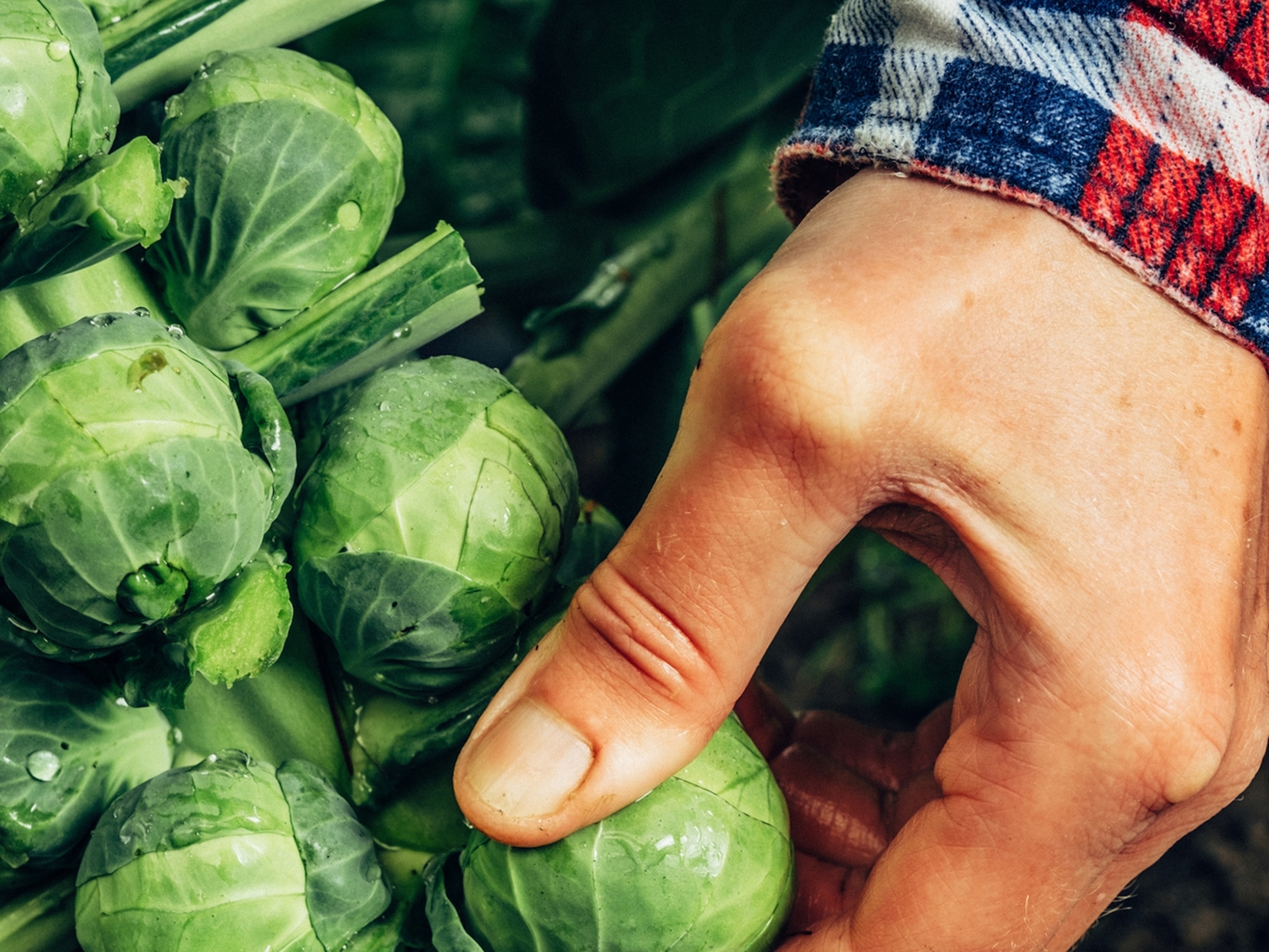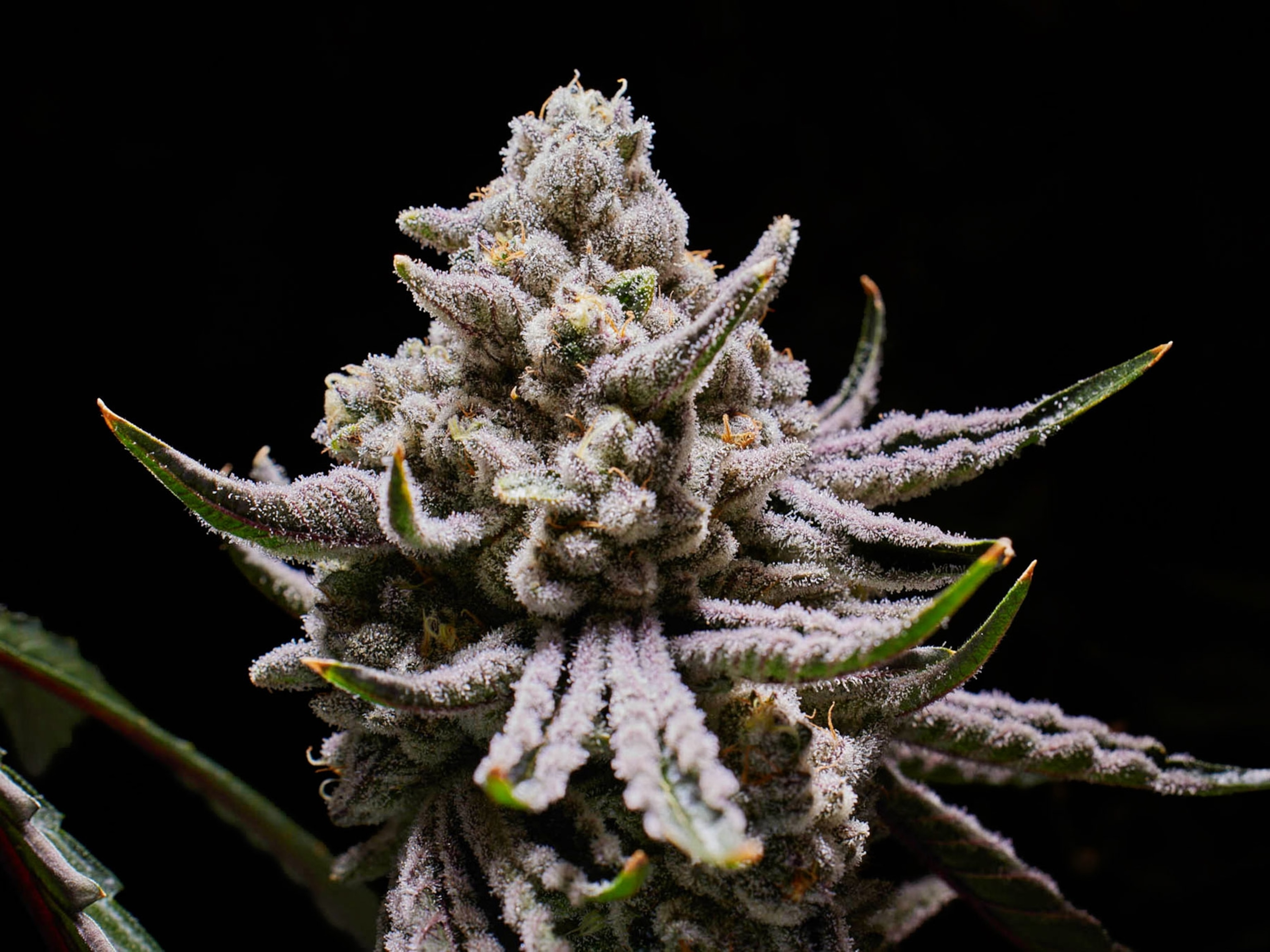
White Rhino. Dr. Gonzo. Cannabis names reveal more than you think
As marijuana restrictions ease, consumers are navigating a list of names that may seem nonsensical—but can hold clues to what you're buying.
Death by Cake, Captain America, Hippie Chicken, Arnold Palmer (for the golfer and the ice tea-lemonade), Sour Diesel, Atomic Apple, Tangerine Trainwreck Haze, Dr. Gonzo, White Rhino—what’s a burgeoning cannabis shopper to make of these bizarre names?
As the haze of criminality is clearing, the number of consumers purchasing marijuana is growing, with projected sales reaching $33.6 billion by the end of this year and nearly doubling to $53.5 billion in 2027. While exact figures on cannabis users, legal or not, are hard to track, a recent poll from Gallup finds that nearly 17 percent of the population uses marijuana. Another recent poll from the Pew Research Center found that 88 percent of the country is in favor of legalization, and 58 percent supporting recreational use.
Although still under federal prohibition—legality is determined by voters and governance is handled by the states—38 states across the U.S. have either legalized cannabis for medicinal purposes only or fully as "recreational."
For newcomers to cannabis, the names of these different strains may seem nonsensical, but they can hold clues to what you're buying, where it came from, and the effect it can have medicinally or otherwise.
How marijuana names emerged
Marijuana was criminalized in the 1930s thanks to often classist and racist anti-cannabis campaigns. But despite politically motivated narratives about the drug, it didn't go away. It went figuratively underground and literally into the hills, where, by the 1960s and '70s, pot aficionados and dogged growers and breeders continued to produce cannabis for sale, usually for around $10 an ounce. Today an ounce averages about $260.
(As Amsterdam bows out, are these the new capitals of cannabis tourism?)
Popular varieties then were Acapulco Gold, Maui Wowie, Panama Red, and Afghani Kush, and the naming protocol, loosely stated, resembled traditional plant taxonomy: identified by the geographic region where the seeds were sourced, often with added adjectives that describe perks like the quality of the "high"—in a word, wow.
In 1974, early cultivators Ed Rosenthal and Mel Frank—legends in their time, then and now—published the 94-page "Marijuana Grower's Guide," at the time a counter-cultural phenomenon and the inspiration for the "grow your own" movement of the 1970s. In 2021, Rosenthal published an updated version, "Cannabis Grower's Handbook," this one weighing in at 736 pages.
But the two are perhaps best known for introducing and cultivating new varieties, or cultivars.
A fast-growing, easy-to-cultivate plant, cannabis is a crossbreeding goldmine for growers like Rosenthal and Frank, who worked with original landrace, or native, seeds to create ever-growing numbers of hybrids. Like with any plant, crossbreeding brings out desirable characteristics—like higher levels of THC (Delta-9-tetrahydrocannabinol), for example, or cannabinoids, which make cannabis a powerful psychotropic. Another compound, terpenes, directs aroma and taste.
By following Rosenthal and Frank’s guide, a cultivar like Pineapple Kush could be deciphered as a genetic offshoot of a native plant from the Hindu Kush Mountain region of the Himalayas and the palate would hint of pineapple.
Names can also hint at physical characteristics of a strain. Cannabis is often bred for aroma, commonly skunky. Skunk #1, developed in the 1970s, became so popular for its psychoactive prowess that it has found its way into 1455 varieties.
As the years passed and the attributes of the various cultivars were mined, thousands—Rosenthal suggests "tens of thousands"—of new cultivars were created and named. But because the plants have remained illegal for so long, there was no way to regulate them and ensure names actually reflected the product being sold.
How should we name newly legal cannabis?
And herein lies a modern concern: How does a novice shopper make an informed purchase? Can they keep up? Can they even understand what the products are when the names are so, well, odd (though some counter that pharmaceuticals sound just as nonsensical).
For Andrew DeAngelo, a longtime cannabis business consultant and co-founder of Harborside Dispensary in Oakland, California, the future is about building a responsible industry—with labels that accurately describe what's inside and names that are chosen wisely. Consumers are often confused about the two primary types of cannabis sold at dispensaries, indica and sativa, which growers claim have traits like relaxation (indica) or energy (sativa), the latter tending to be higher in THC. Even with more descriptive names, consumers might not be guaranteed to get exactly what they’re looking for.
(Is pain relief from cannabis all in your head? Learn more.)
Measuring the psychotropic and other properties of a particular cultivar takes expensive DNA tests, DeAngelo explains. And there continues to be an ongoing debate about the clear distinctions between indica and sativa after years of crossbreeding, a debate that goes back to 1753 when Swedish botanist Carl Linnaeus classified cannabis as "sativa," meaning something cultivated.
"It's kind of a hot mess right now," admits DeAngelo, whose primary concern over this lack of consistency is political or federal repercussions.
Going back to basics
Actor Jim Belushi, who opened Belushi's Farm along the Rogue River in Oregon eight years ago, is purposeful about his crop: He seeks original landrace strains that tell stories of grass from the past. The most endearing harkens to the 1970s; his late brother, comedian John Belushi; and the "Saturday Night Live" cast.
Known as the "Smell of SNL" for the aroma that wafted "down the halls of the 17th floor of Rockefeller Center," says Belushi, Gulzar Afghanica is a landrace strain, the parent from which many modern hybrids have been bred. Its seeds were brought to the U.S. from Afghanistan by “Captain Jack,” a then-anonymous grower who provided that former SNL cast with a plant-based source of inspiration.
As Belushi tells it, the real (Captain) Jack Murtha then took the seeds to California's marijuana growing grounds, Mendocino County, where he cultivated but didn't hybridize them, making Gulzar one of few purebreds remaining in a sea of hybrids.
"I'm sure the 'Coneheads' came out of it," said Belushi, referring to the cannabis as inspiration for the 1977 SNL sketches starring Jane Curtain and Dan Aykroyd as bumbling aliens with bald, cone-shaped heads. "It's a very creative strain."
Correction: A previous version of this article stated Belushi's Farm opened 15 years ago. It was opened eight years ago.








